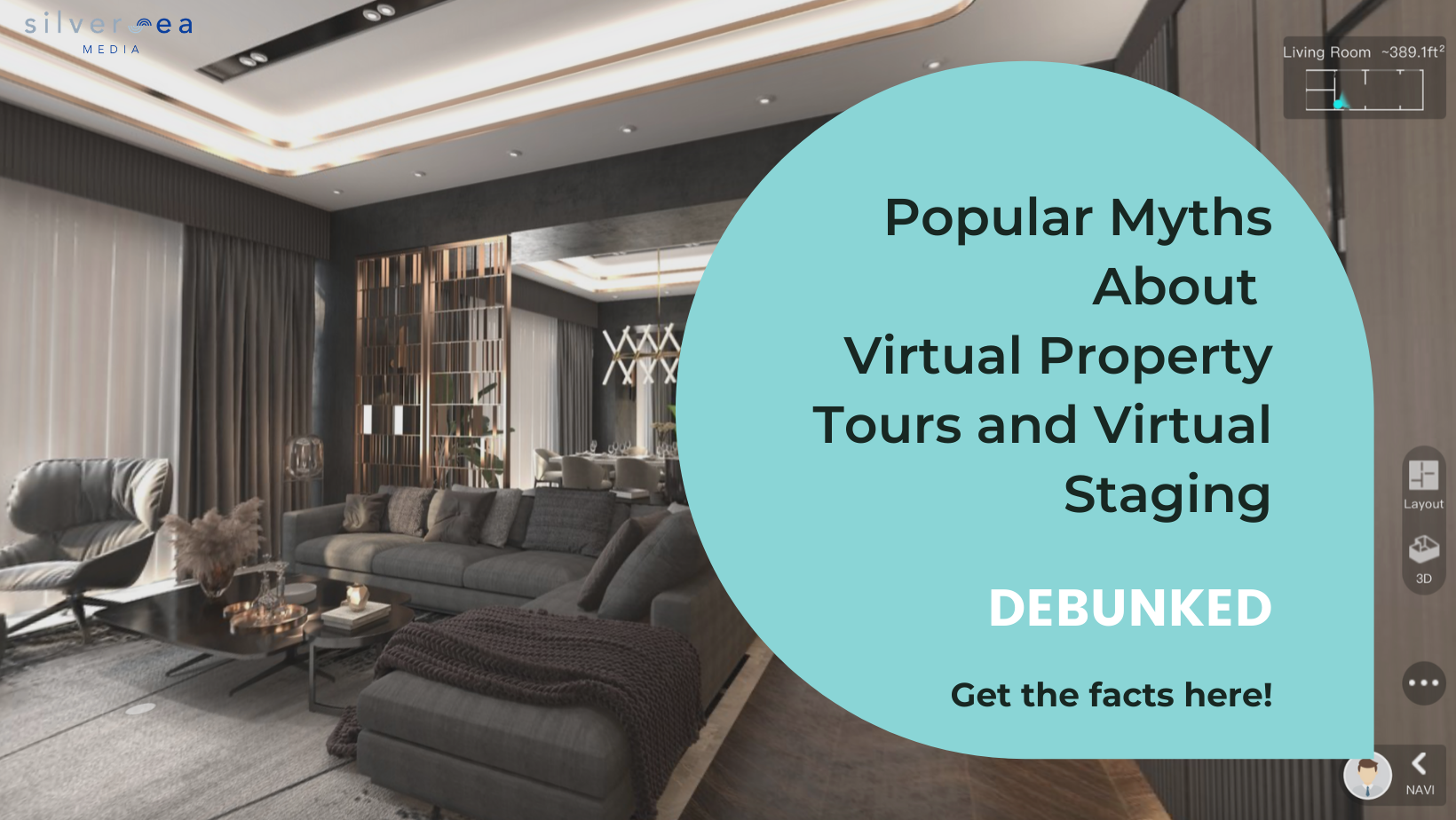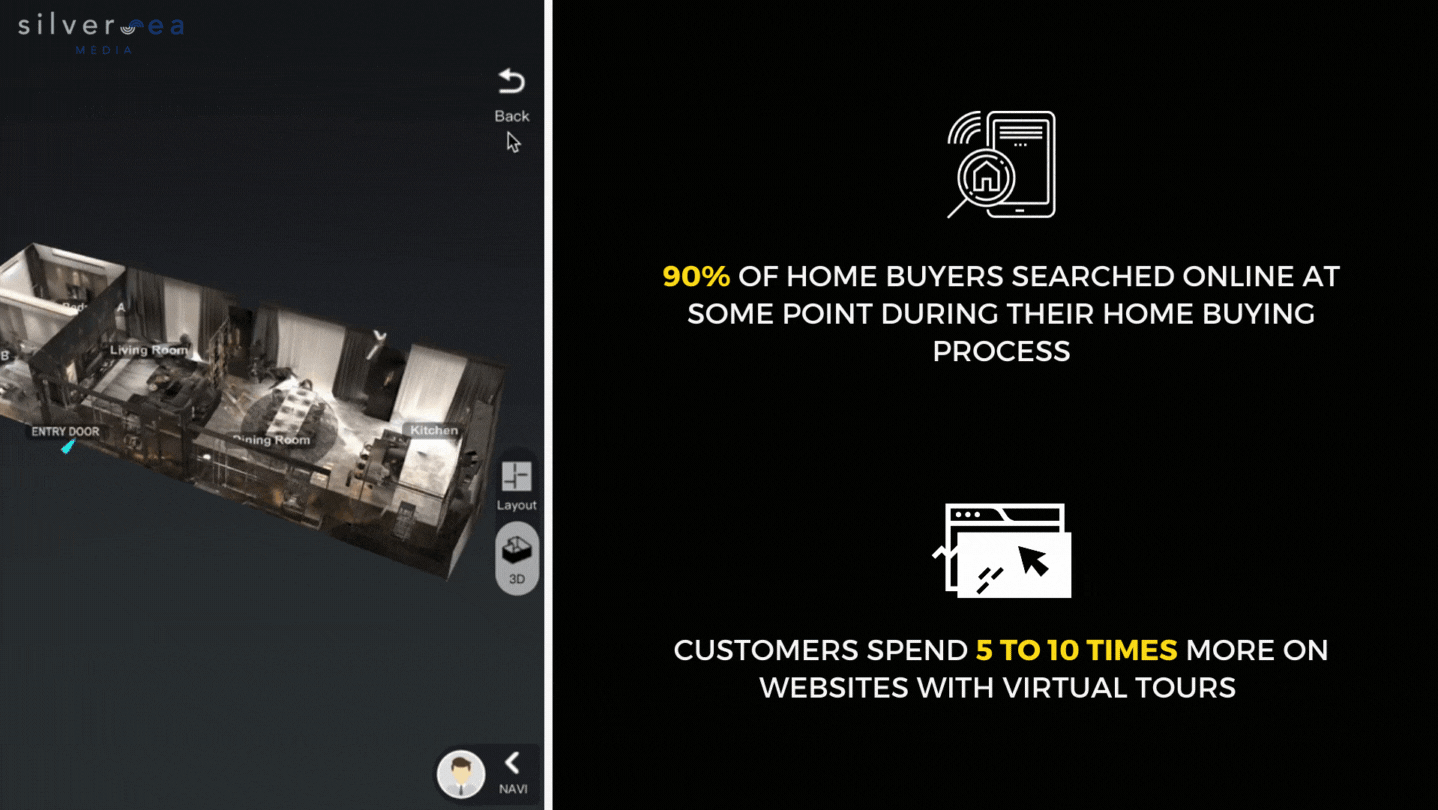Whether from a bad experience or misled assumptions, many companies seem to still be wary of implementing virtual tours and virtual staging, regardless of the benefits. So, we are here to clear up some commonly held beliefs of this technology in real estate.

1. Virtual tours are expensive
Although virtual tours generally cost more than a standard photoshoot, they can help you save time and money. Home buyers’ behavior is changing, they demand more convenience and are using more technology to shop for homes. If buyers are ruling homes in or out based on virtual tours — and many data shows that is precisely what is happening — then those visuals must be of the highest quality.
An immersive virtual tour creates a meaningful home-viewing experience and helps eliminate people who are just browsing from ready-to-purchase buyers. When a potential buyer contacts you after already viewing the virtual tour, it means they are most likely to be genuinely interested, and you have a higher chance of making the sale.
Gone are the days when you have to spend tons of money on advertising materials and physical staging of homes. Now you can simply embed the unique link of each virtual tour on your website and share it on social media platforms. You can also integrate interactive features into the virtual tour, such as videos, animated panoramas, and live chat to engage your viewers.
Give your potential buyers the tools and information they need to explore each property as much as they can before they contact you. Let a cost-effective virtual tour do the heavy lifting for you.

2. 3D pictures on virtual staging look fake
Some renderings can look fake, which is why it’s important to research various portfolios before commissioning a project, so you know what to expect. Virtual staging professionals know how to use advanced 3D software, where to get top-quality 3D models, and how to set up the most realistic textures.
3D renderings offer powerful benefits mainly because it is difficult for potential buyers to visualize their future homes through a 2D image or a cardboard replica. In fact, high-quality renderings can be so photorealistic that it’s hard to tell they are even fake. Professional virtual stagers know how to provide context, add smooth retouches, and stage the surrounding neighborhood to set the life of someone who could live there.
In addition, virtual staging is customizable. This makes it a great way to add a unique spin on your community to effectively reach your target market.
3. Virtual staging requires rooms to be 100% empty
This is simply not true. 3D renderings are great for cluttered, dated, or under-optimized homes that could use a makeover. You can digitally remove the existing furniture and create the optimal design and layout that can take your property’s value to the next level.
Virtual furniture is easy and affordable to use in your listing’s photos. Replace the cost and tiring work of taking out old furniture with the ease of furniture replacement through virtual staging. You can experiment with different furniture configurations in each room, and also choose among various styles, such as minimalist, contemporary, rustic, or coastal. The possibilities are endless with virtual staging!
4. Virtual tours are boring and noninteractive
There are various ways to spice up your virtual tour. Improve user experience by adding multimedia elements to anywhere in the virtual tour scene. These can include an audio description, interactive hotspots, text, or videos that provide more information on a particular point of the property to the potential buyer. Embed games such as ‘Find and Share’ and ’Scavenger Hunt’ in your virtual tour to further jazz up the user experience and boost the engagement rate.
You also have the option to initiate a live chat with your client. The live chat feature makes it unique as it becomes much easier and convenient to clear every query of your client on the spot.





